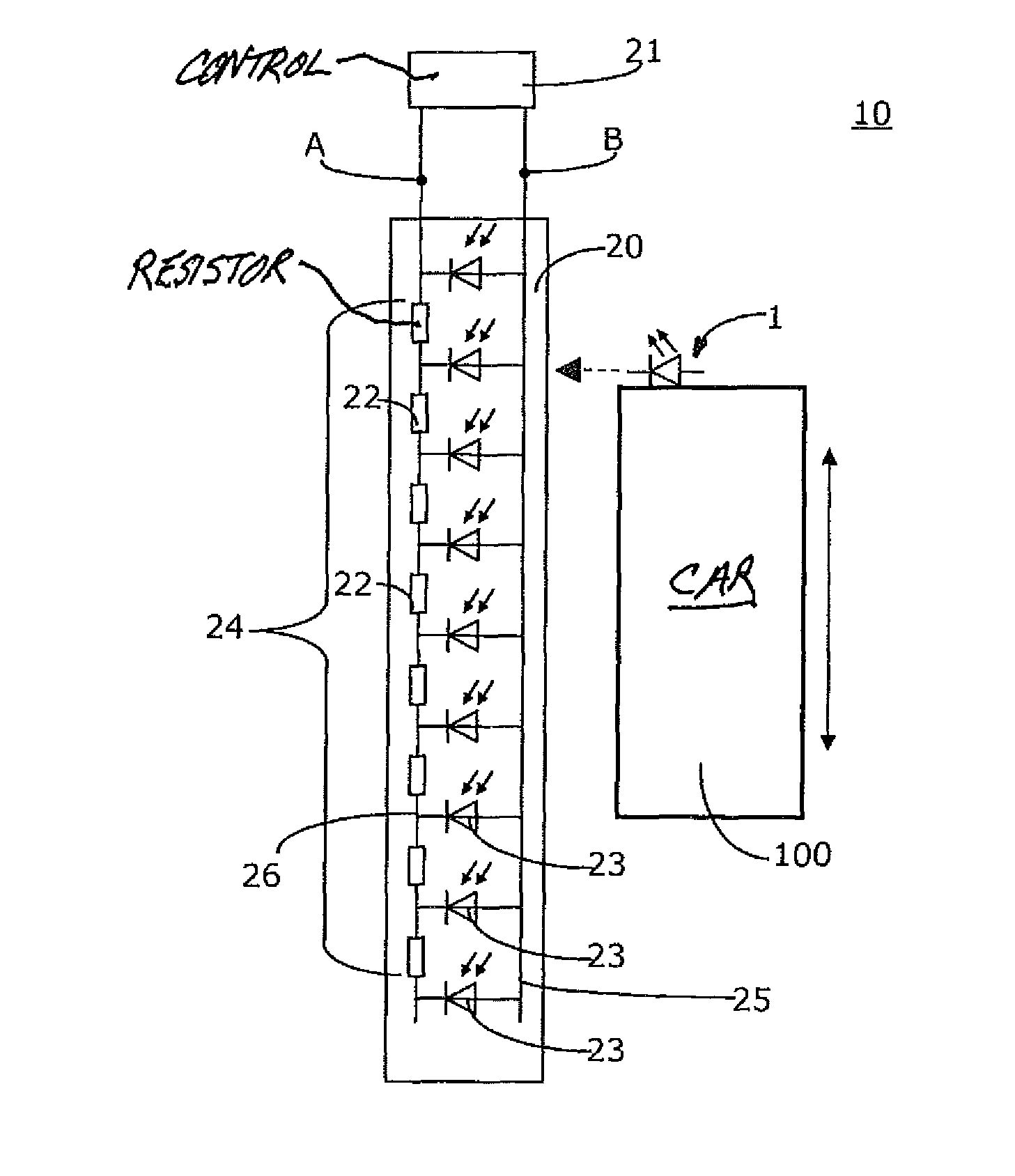Elevator car position detection system and method of determining a position of an elevator car in an elevator shaft
a technology of elevator car and detection system, which is applied in the direction of elevators, instruments, computer control, etc., can solve the problems of unreliable detection of beams, inability to determine the exact position of elevator cars, and serious errors, and achieves simple and cost-effective, easy-to-maintain effects
- Summary
- Abstract
- Description
- Claims
- Application Information
AI Technical Summary
Benefits of technology
Problems solved by technology
Method used
Image
Examples
Embodiment Construction
[0019]FIG. 1A shows the preferred embodiment of the elevator car position detection system 10. The idea behind the invention is the use of a sensor stripe 20 in combination with a light emitting device 1 mounted on top of an elevator car 100 and control electronics 21. The sensor stripe 20 comprises a vertical feed line 25 and a vertical resistor line 24 with optical sensors 23 positioned between them. As it is shown in FIG. 1B, the optical sensors 23 are positioned between a node 26 of the resistor line 24 and a node 27 of the feed line 25. In the preferred embodiment the optical sensor 23 is a photodiode or phototransistor which, when illuminated, conducts electricity to create a local electrical connection between the feed line 25 and resistor line 24 and thus modifying the resulting resistance Rres between an end or terminal A of the resistor line 24 and an end or terminal B of the feed line 25. The polarization of the optical sensor 23 is to be determined based on the way the s...
PUM
 Login to View More
Login to View More Abstract
Description
Claims
Application Information
 Login to View More
Login to View More - R&D
- Intellectual Property
- Life Sciences
- Materials
- Tech Scout
- Unparalleled Data Quality
- Higher Quality Content
- 60% Fewer Hallucinations
Browse by: Latest US Patents, China's latest patents, Technical Efficacy Thesaurus, Application Domain, Technology Topic, Popular Technical Reports.
© 2025 PatSnap. All rights reserved.Legal|Privacy policy|Modern Slavery Act Transparency Statement|Sitemap|About US| Contact US: help@patsnap.com



